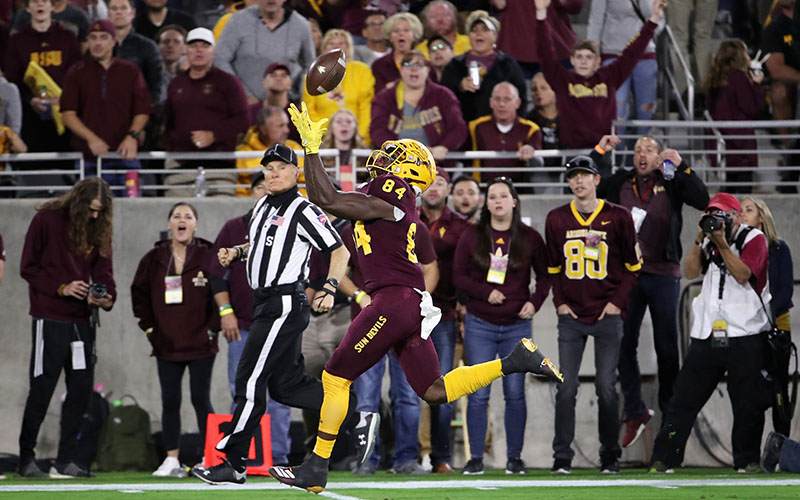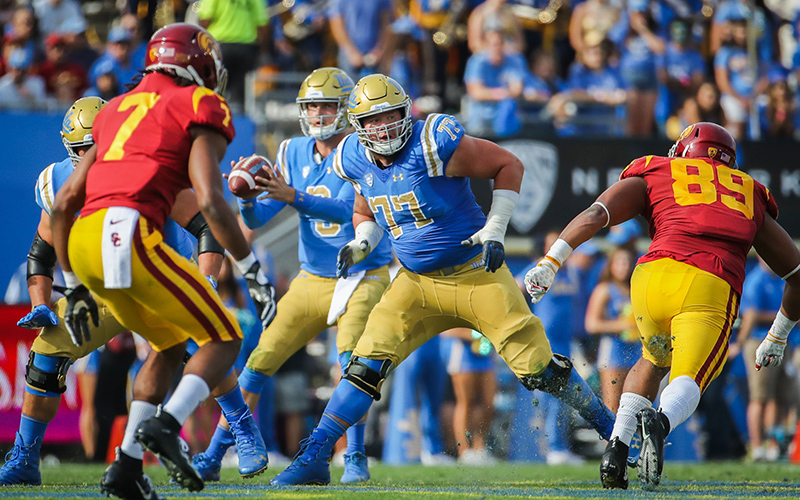PHOENIX – With the presidents and chancellors of Big Ten universities voting to resume football last week, players and fans called on Pac-12 Conference Commissioner Larry Scott to join other Power Five conferences and allow the football season to kick off.
However, Scott said in a statement that universities in California and Oregon do not yet have approval from state or local health officials to begin contact practices. He expressed hope that the conference’s new testing partnership with Quidel Corporation would “help satisfy public health official approvals,” allowing a return to play.
The Pac-12’s member schools are spread across six states, and each has its own health guidelines that must be satisfied before schools there can return to playing contact sports. It’s a complicated puzzle the Pac-12 needs to solve before football can resume.
Here’s a look at the six pieces of the puzzle:
Arizona
Arizona does not have specific guidelines for college sports to return to play, a spokesperson from the Arizona Department of Health Services said in an email last week.
The department refers to the Arizona Interscholastic Association’s Return to Activity Guidelines for youth sport competitions and advises colleges to work with their respective county health departments for guidance, the spokesperson added
The Maricopa County Department of Public Health, which has jurisdiction where Arizona State is located, and the Pima County Health Department, which oversees the University of Arizona’s county, did not respond to emails and calls made by Cronkite News.
The AIA, the governing body for Arizona high school sports, recently updated a key COVID-19 metric to allow more high school teams to return to play Sept. 30.
California
Players from the University of Southern California’s football team sent a letter to California Gov. Gavin Newsom asking him to “work with us … to find a path forward for us to resume competitions later this fall” and ease some restrictions in place barring teams from participating in practice and competitions.
In a press conference Wednesday, Newsom insisted that “there’s nothing in the state guidelines that denies the Pac-12 from having conference games.”
However, the state’s published guidelines don’t make that practical.
Newsom said the state coordinated with the NCAA to create guidelines published in a document of guidance to institutions of higher education in August stating teams should train in cohorts of six to 12 people, a restriction players from USC noted in their letter to him.
Such a restriction would make the type of practices necessary to prepare for major college football games difficult, at best.
Newsom said he and Scott talked two hours before the press conference to discuss state health guidance for a safe return to contact play.
In a statement Wednesday, Scott said that the conference’s four California universities, along with its two Oregon universities, received clearance from their respective state health officials to return to play.
In the statement, he added that the universities “will now each individually and immediately reach out to their relevant county public health officials to seek clarification on what is required to achieve the same clearance to resume contact practice and competition.”
Oregon
According to a document from the Oregon Health Authority, recreational “full-contact sports,” defined as sports that “require or are likely to have routine or sustained close proximity or physical contact” between players, are prohibited as of Sept. 15.
Sports that fall under the “full-contact” category include football and basketball, among others.
The athletic departments of the University of Oregon and Oregon State University met with the OHA Wednesday afternoon to request an exemption to its sports guidance, OHA spokesperson Timothy Heider said in an email to Cronkite News.
OHA granted the request but required the Pac-12 to provide the OHA with “written operating procedures” for it to be approved, Heider said. The OHA had yet to receive those written procedures as of the end of last week, but said the conference is “in the process of drafting and finalizing a plan to submit.”
Washington
Mike Faulk, press secretary for Washington Gov. Jay Inslee’s office, said in an email Friday that until the Pac-12 releases new guidance for returning to play for institutions, “there is really nothing for the state or the universities to react to.”
Washington has a four-phase “Safe Start” COVID-19 response for each county in the state, with Phase 1 being the most restrictive and Phase 4 the least restrictive. Each level eases restrictions based on multiple metrics, such as the percentage of positive tests per week and the percentage of hospital beds occupied by COVID-19 patients, among other benchmarks.
As of Sept. 14, the University of Washington, located in King County, was still in phase two. Washington State University, located in Whitman County, had moved to phase three.
Phase two allows outdoor recreational sports to be played if players are limited to groups of five in different parts of the field, separated by a “buffer zone” and social distancing of at least 6 feet is followed with no contact, according to a COVID-19 Requirements document.
Phase three allows outdoor recreational sports to resume with a limit of 50 people on the field at a given time.
Colorado
A spokesperson from the Colorado Department of Public Health and Environment told Cronkite News in an email Friday that university plans to return to playing sports must first be submitted through local public health agencies to the department.
Guidance for organized sports published by the CDPHE on Sept. 16 lists several guidelines for returning to organized sports, such as mandatory symptom screening, maintaining 6 feet or more of social distancing and a ban on spitting, among others.
Mask mandates in outdoor sports are determined by local health authorities, according to the document.
Utah
Utah has a level-based restriction system similar to Washington, using four different colors to represent varying levels of risk of spreading the coronavirus.
The University of Utah, located in Salt Lake County, is in the yellow, or “low risk,” phase.
This phase allows youth outdoor sports activities to be conducted while maintaining 6 feet of social distancing, wearing a face covering when social distancing isn’t possible and having recommended symptom screening before practices and competitions.



